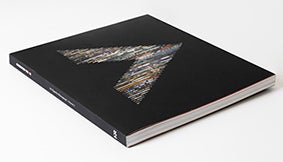
Opacity

Why Opacity Matters
Measuring Opacity’s influence may be difficult in quantitative terms, but Doug Wignall, president of architecture, notes that its effects are real and long-lasting. Most important, he says, is how it relates to our own sense of purpose and impact in the world and its influence on ensuring our practice stays relevant in a changing world.
“Jury deliberations provide an abundance of sometimes uncomfortable moments of insight and introspection—along with moments that are joyfully validating,” he writes. “It takes a lot of work to frame and articulate meaningful constructive criticism, and it is equally difficult to keep an open mind to listen, process, and be inspired by it.”
A Shared Purpose With Opacity
The Opacity initiative is much more than an annual design review. Our Global Design Director Brian Kowalchuk explains that it's an integral part of our shared purpose. "Without a doubt, Opacity fosters a sense of friendly competition between the studios," Brian comments. "Yet, we come away from it with a greater sense of camaraderie and a more profound understanding of our design practice in the process."

Opacity Publication Series
The second Opacity monograph, "Greater Than," signifies the culmination of six years of our Opacity cycle. This extensive publication, highlighting jury selections from 2020 to 2022, features rich content, including stunning visuals, engaging infographics, and insightful essays from notable outside critics and practitioners alongside those penned by HDR staff selected through an internal essay competition. Edited by architectural critic Anjulie Rao, this monograph reflects on both historical and future perspectives, while also focusing on the individuals within our expansive architectural practice. The book highlights how our many unique threads — collaboration, diversity, sustainability and transformation — are interwoven into a powerful collective.
The title of this sixth Opacity book, "Endnote," is a response to the jury’s discourse and selection. Traditionally, endnotes appear at the end of a book or chapter, providing research citations, further reading, or complicating issues that the author feels are necessary to understand the text fully. Similarly, this Opacity publication emphasizes the importance of context through endnotes — each awarded project receives its own set of endnotes as further insight into the design and the jury’s selection.
The title of this fifth Opacity book, "Gestures," is a response to the jury’s discourse not only on the design elements of each project but also on what each of those elements signified. Certainly, a well-articulated stair could stand beautifully on its own — but how that stair generated social spaces and thus greater metaphorical connection between users, was discussed as a “gesture.” Ultimately, when your job is to build the world we inhabit, we learn the power of gestures; their ability to bring us together, to invite us in, to share with one another, to care for the planet, to pay homage to the past, and to connect communities.
The title of this fourth Opacity book, "Emmetropia," is a response to the pandemic environment during which the review took place: trapped at home, viewing the world’s event through our computer screens and tablets. For many architects, it means they are literally creating the world while apart from it. Projects included were recognized for their forward-thinking principles that focus squarely on the future; with sustainability and resilience at the forefront, we can look forward to places and spaces that bring users closer to the environment and, once again, back to each other.
The title of our first Opacity monograph, "33.3 This Point In Time," marks the completion of our first Opacity cycle. It is a sweeping publication rich with content, from beautiful imagery and compelling infographics to thought-provoking essays by esteemed writers and critics: Mimi Zeiger on Context; Alissa Walker on Form; Susan Szenasy on Materials; Aaron Betsky on Program; Katie Gerfen on Space; and Chrysanthe Broikos on Sustainability. Edited by Jenna M. McKnight, this monograph looks to both the past and the future; it also looks inward by exploring the people who make up the firm’s vast architectural practice.
The title of Opacity’s third volume, "Verge," stems from recurring comments made during the 2018 jury deliberations: HDR is on the verge of realizing its full potential and reaching a heightened level of design mastery. A new era awaits for our global architecture practice, but how do we get there? This book explores the 20 projects the jury selected that best demonstrate how we must work with conviction to define, strengthen, and promote our “ethos”— the values, aspirations, and practices that constitute our character.
The title of this second Opacity book, "Rigor," captures the spirit of the 17 honored projects, all of which display a heightened level of discernment and care. Last off, and perhaps most importantly, it speaks to the practice of architecture and the essence of great buildings and considered landscapes. Creating spaces and places that inspire and endure requires passion and discipline. The shaping of our built environment should always be a rigorous undertaking.
Buildings require immense capital investment—investment more readily made when there’s some assurance of outcome. This narrow focus, however, can make a casualty of creativity, of exploration — of risk. This first Opacity book, "Risk," reflects the intended mission of the Opacity initiative itself: to balance the scales, reinvigorating a culture of discourse and exploration within everyday practice. Interestingly, the 46 projects featured ultimately exemplified the jury’s notion of risk: incremental changes in concept, design, and/or production that allowed a pedestrian typology to touch on new ground.
If you're interested in receiving a print copy of a recent Opacity publication, please reach out to Tom Trenolone, design director, for more info.










